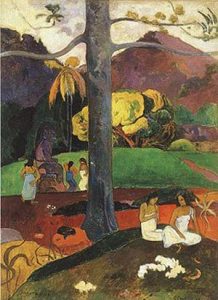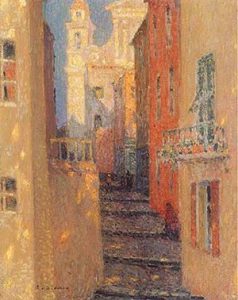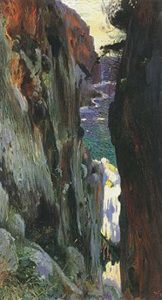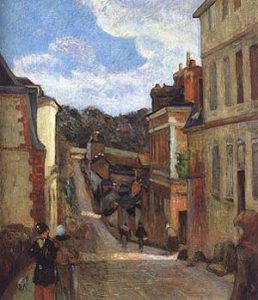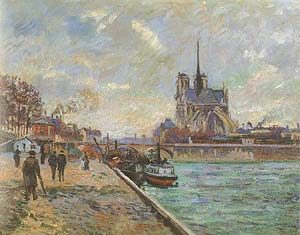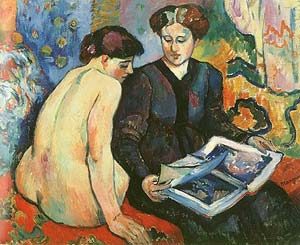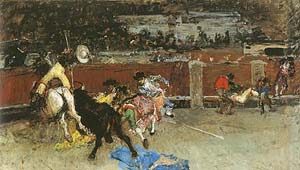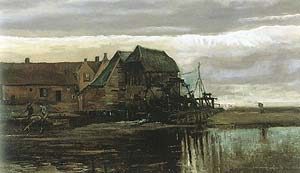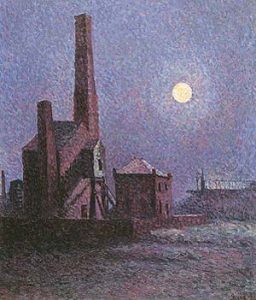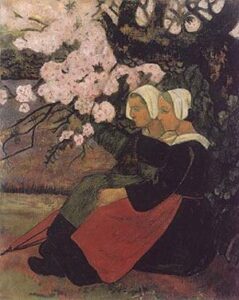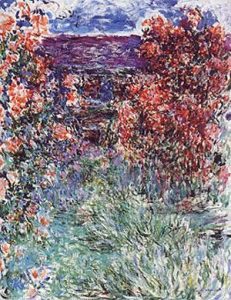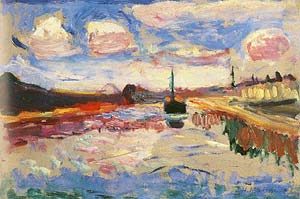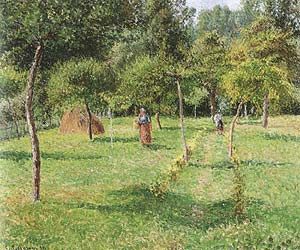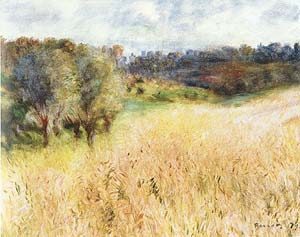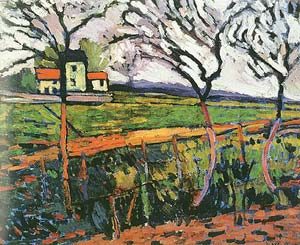The Triumph of Color. Carmen Thyssen-Bornemisza Collection
59 masterpieces from one of the most prestigious private collection in the world.
March 24 2002 / June 23 2002
Roma – Palazzo Ruspoli (150.471 visitors)
Catalogue – Electa
- PaulGauguin, Nei tempi antichi (Mata Mua) 1892
- Henry Le Sidaner, La strada della chiesa, Villefranche-sur-Mer, ca.1928
- Joaquim Mir, L’abisso, Maiorca ca. 1901-04
- PaulGauguin, Strada di periferia 1884
- Gean Baptiste Armand Guillaumin, I moli della senna a Parigi, vista di Notre Dame, ca. 1880 moli della senna a Parigi, vista di Notre Dame, ca. 1880
- Henri Manguin, Le stampe 1905
- Mariano Fortuny, Corrida di tori. Picador ferito, ca. 1867
- Vincent Van Gogh, Mulino ad acqua a Gennep 1884
- Wassily Kandinsky, Murnau case nello Obermarkt 1908
- Maximilien Luce, Fabbrica al chiaro di luna 1898
- Paul Sérusier, Le due bretoni sotto il melo in fiore, 1892
- Claude Monet, La casa fra le rose, 1925
- Henri Matisse, Canale del Midi 1898
- Camille Pissarro, Il frutteto a Eragny 1896
- Pierre-Auguste Renoir, Campo di grano 1879
- Maurice de Vlaminck, Campi, Rueil, ca. 1906-07
After ten years from the exhibition dedicated to expressionist masterpieces from the Baron Thyssen-Bornemisza Collection, in 2002 Fondazione Memmo presents another important show featuring works from what is considered one of the world’s most prestigious private collections. Carmen Thyssen-Bornemisza’s collection, constantly evolving, has allowed the addition of works by the greatest artists of the 20th century to its original core.
Through approximately sixty extraordinary paintings, viewers can trace the path chosen by artists towards modernity. The curator has constructed an exhibition focused on the transformation of the notion of taste, a new aesthetic category based on the subjective experience of art that inspires not only the history of creation but also that of modern collecting.
The journey begins in the mid-nineteenth century with the spread of a taste for the picturesque, both social – represented in the exhibition by Spanish neo-goyesque painters (Lucas Velázquez, Fortuny, and Zuloaga, with a precedent from Goya), and natural – represented by American landscape painting, as relevant to the topic as it is unknown in Europe. The theme of nature, viewed and felt in French painting from a rural perspective, is the leitmotif of the next stage of this journey, featuring artists such as Corot, Daubigny, or the young Van Gogh. This naturalistic-inspired painting, focused on the expressive role of light and colour, constitutes the immediate precedent of Impressionism, a central development in the genesis of modern art. Included in the exhibition are paintings by Monet, Pissarro, Renoir, Boudin, and Guillaumin. The show, also attentive to the spread of Impressionism, follows the thread of the progressive autonomy of light and colour in various manifestations of the post-Impressionist context.
The importance of Gauguin, a central figure in this plural and rich period, is underlined by four paintings. Fauvist and expressionist painters, heirs of post-Impressionism, free themselves from the descriptive functions of painting, revealing the moods, expressing the artist’s inner world, his feelings, and impulses.
The abstraction of Delaunay and Kandinsky achieves the definitive liberation of art from tasks both descriptive and formal; with the disintegration of its iconic dimension, painting becomes a triumph of colour. The Roman exhibition “The triumph of colour. Carmen Thyssen-Bornemisza Collection” is made possible by the commitment of Enel, which participates in its realization as part of the company’s cultural program aimed at enhancing and promoting various forms of artistic expression, through the organization of exhibitions, readings, concerts, and the artistic lighting of some of the most important national monuments such as the Vatican Necropolis and Palazzo Altemps in Rome, the Basilica of San Marco in Venice, and the “zone of theatres” in Pompeii.

